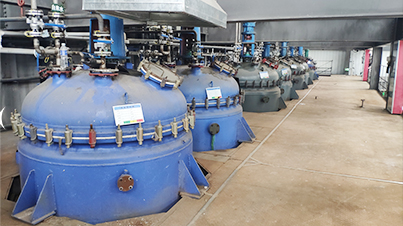Coagulant and Flocculant Chemicals for Effective Water Treatment Solutions
Understanding Coagulant and Flocculant Chemicals in Water Treatment
Water treatment processes are essential in ensuring the availability of clean and safe drinking water. Among the various chemical agents used in these treatments, coagulants and flocculants play a significant role in removing impurities from water. While they are often used interchangeably, these two types of chemicals serve different but complementary purposes.
What are Coagulants?
Coagulants are chemical agents that promote coagulation, a process where small particles clump together to form larger aggregates, known as flocs. This process is crucial in water treatment because it helps remove suspended solids, colloidal particles, and microorganisms from water. Common coagulants include aluminum sulfate (alum), ferric sulfate, and polyaluminum chloride. These chemicals work by neutralizing the electrical charges of particles in water, which facilitates their aggregation.
When introduced into water, coagulants create a charge-neutralizing environment, allowing particles that would normally repel each other due to like charges to come together. The effectiveness of coagulants can depend on several factors, including the pH of the water, the type of coagulant used, and the concentration of suspended solids. Proper dosing is crucial; too little coagulant may result in ineffective treatment, while too much can lead to residual chemicals in the treated water, which can be harmful.
What are Flocculants?
After the coagulation process, flocculants are used to aid the formation of larger flocs that can settle more easily. Flocculants are typically high molecular weight polymers that enhance the aggregation of the newly formed flocs. While coagulants initiate the removal of suspended matter, flocculants act as a bridge, improving the bonds between particles and facilitating the settling process.
coagulant and flocculant chemicals

Examples of flocculants include polyacrylamides and natural polysaccharides. These substances work by increasing the size of the formed flocs, making them heavier and easier to remove through sedimentation or filtration. The effectiveness of flocculants is influenced by factors such as water temperature, the type of particles present, and the specific flocculant used.
The Role of Coagulants and Flocculants in Water Treatment
The combined use of coagulants and flocculants is critical in producing high-quality treated water. In a typical water treatment plant, the treatment process begins with the addition of coagulant chemicals, followed by flocculants. This sequential application ensures that the smallest particles are first aggregated into larger flocs, which can then be more effectively removed from the water.
The efficiency of these chemicals not only affects the quality of the treated water but also impacts the overall operational costs of water treatment facilities. Optimizing the dosage and selection of coagulants and flocculants can lead to significant savings in terms of chemical usage and improved performance in removing impurities, thereby enhancing the sustainability of water treatment processes.
Conclusion
In summary, coagulants and flocculants are vital components in the water treatment industry. Their distinct functions—coagulation for initial particle aggregation and flocculation for further enhancement of floc size—work synergistically to ensure that water is effectively purified. Selecting the appropriate chemicals and optimizing their usage can enhance the efficiency of water treatment systems, leading to safer and cleaner drinking water for all. As the demand for clean water continues to rise globally, understanding and improving the application of these chemicals will remain a priority in advancing water treatment technologies.
-
Pbtc Scale InhibitorPBTC: A Scale Protector for Industrial Water TreatmentNewsAug.05,2025
-
Organic Phosphonate: An Efficient Defender in the Field of Scale InhibitionNewsAug.05,2025
-
Hydrolyzed Polymaleic Anhydride: Green Pioneer in Scale Inhibition FieldNewsAug.05,2025
-
PAPEMP Polyamino Polyether Methylene Phosphonic Acid For SaleNewsAug.05,2025
-
Flocculant Water Treatment: A Pioneer in Purification in the Field of Water TreatmentNewsAug.05,2025
-
Benzyl Isothiazolinone: An Efficient and Broad-Spectrum Antibacterial Protective GuardNewsAug.05,2025





